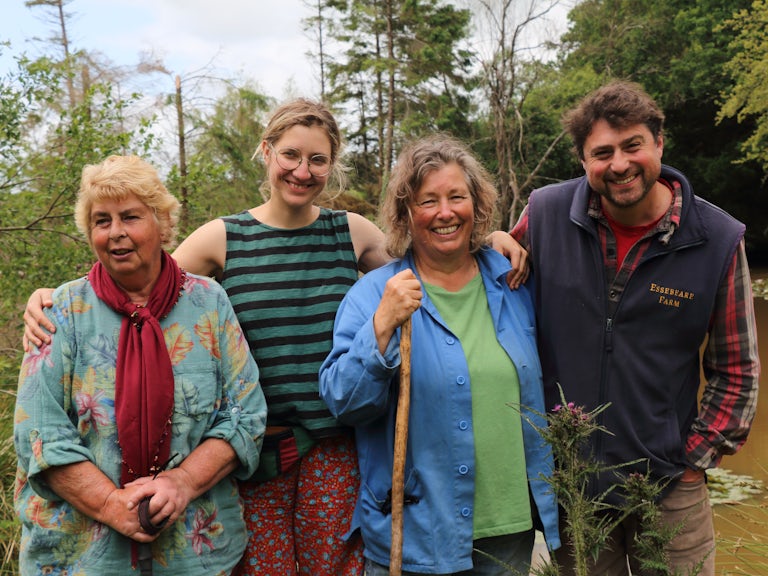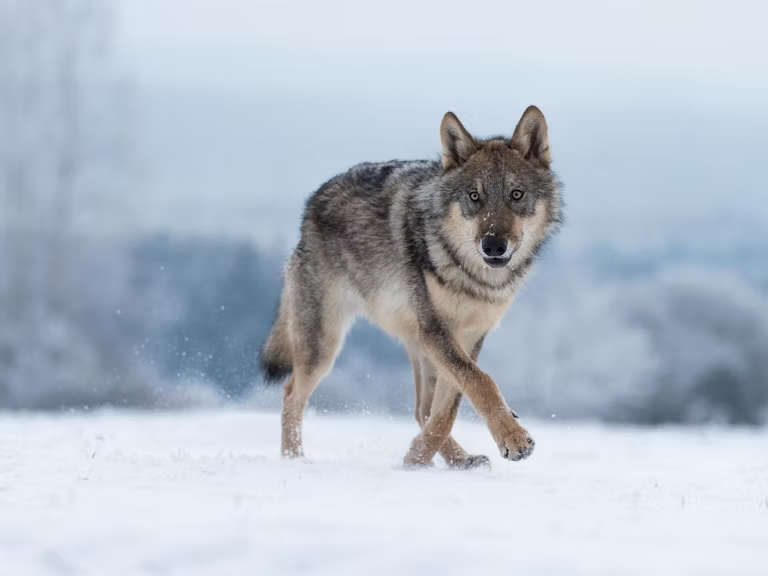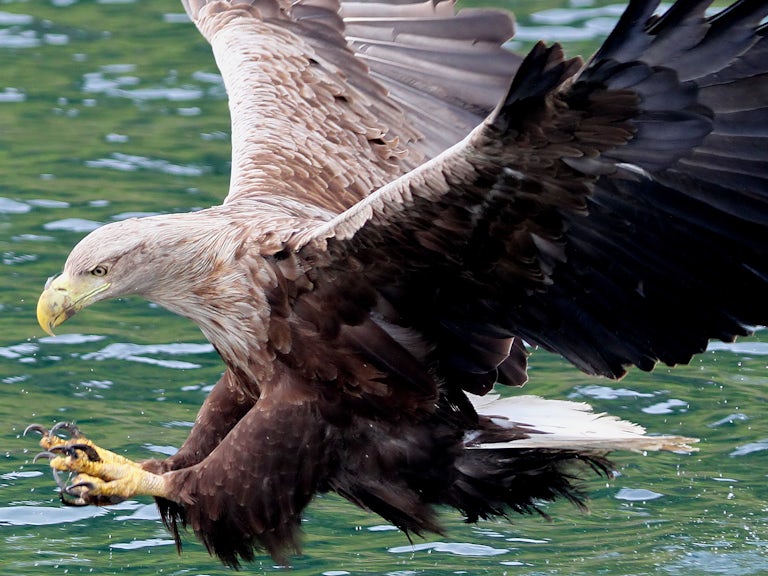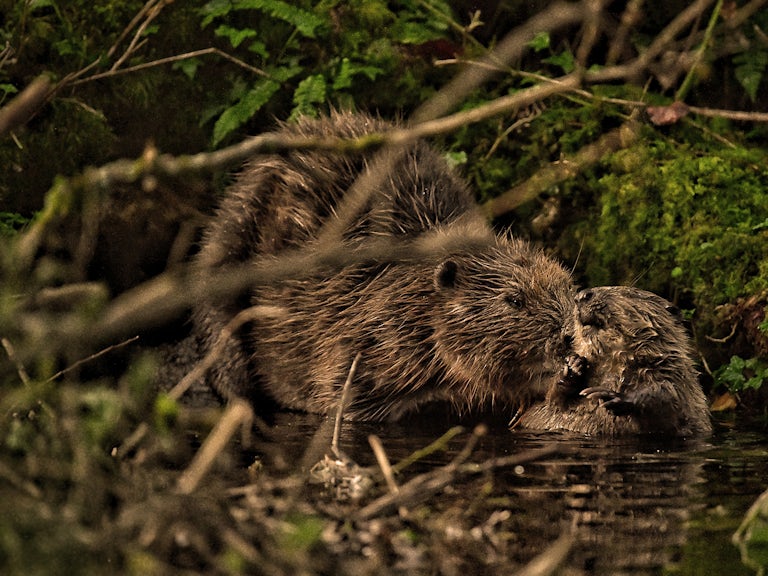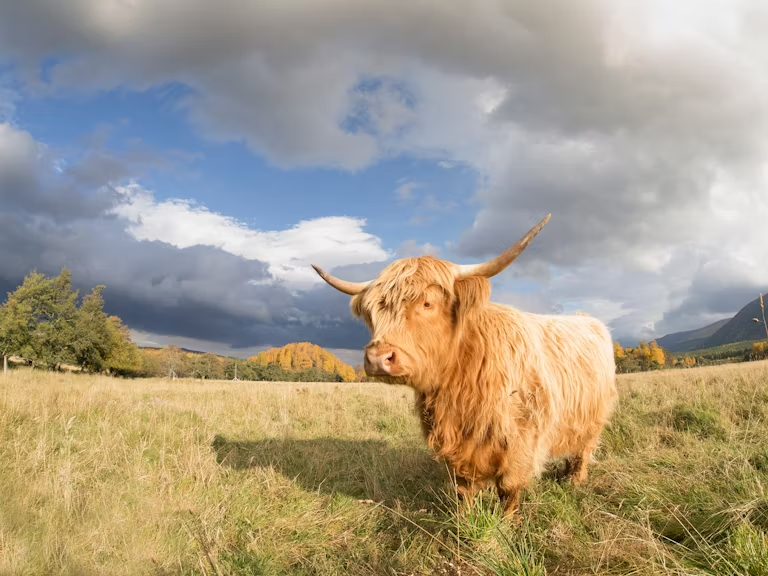Meet the rewilders: Allestree
In the suburbs of Derby, the city council and Derbyshire Wildlife Trust are helping turn a former municipal golf course and park from a manicured grassland into Britain’s largest urban rewilding project, one in which people are very much at its heart.
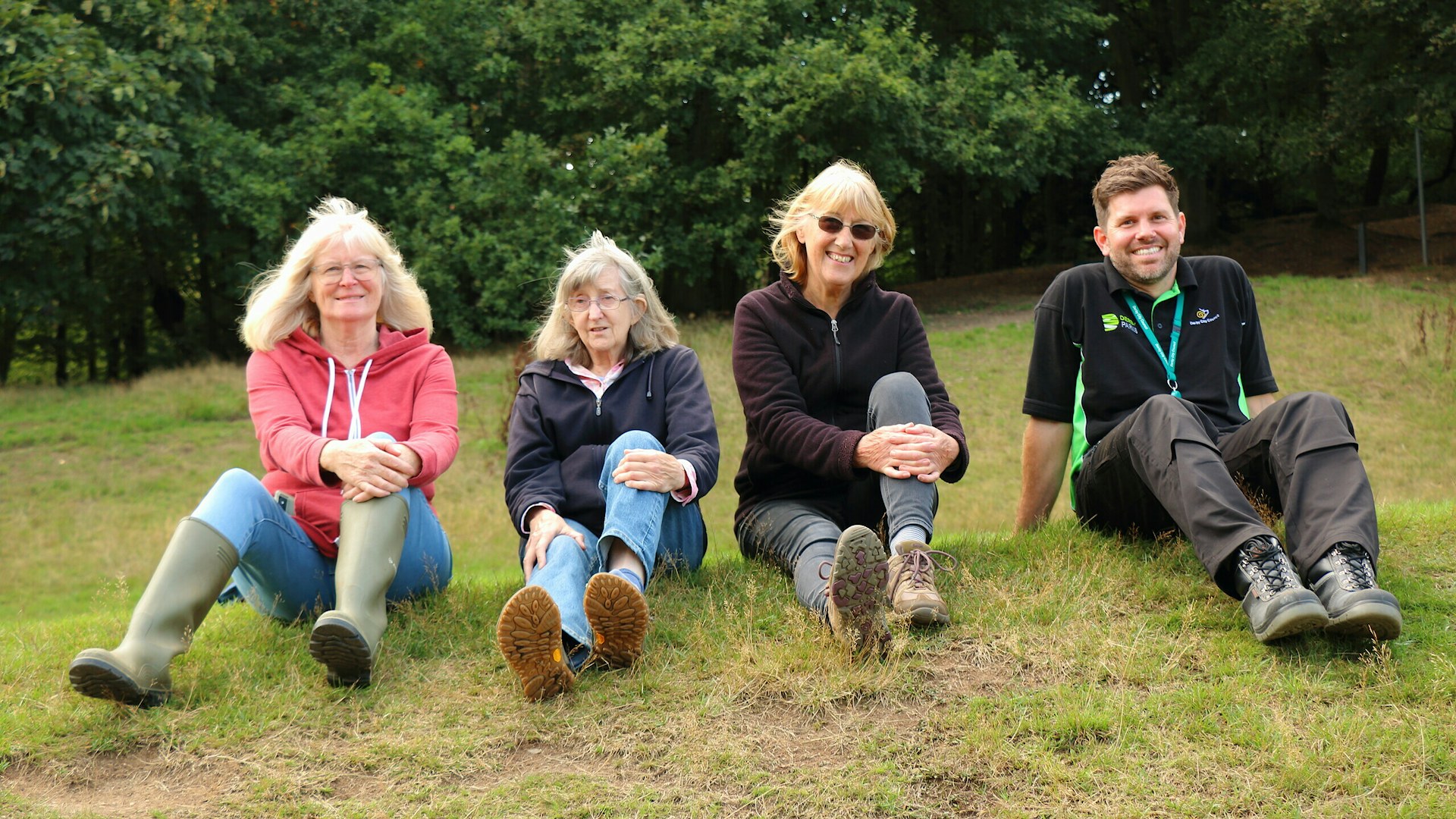
Some rewilding projects arise out of the passion and vision of a single woman or man. Allestree Park is a very different kettle of fish. It’s the product of a wide range of people’s ideas and inputs, slowly coming together into a coherent plan. Council officials, long-time park users, city dwellers, conservationists – even local opponents of rewilding – have all helped shape it.
Yet as Derby City Council Chief Executive Paul Simpson explains, the rewilding initiative sprang, like so many bright ideas, from an almost casual remark.
The Council had decided, largely for financial reasons, that it could no longer subsidise its municipal golf course in the park: there were five other golf courses in the area and spending public money on it for the benefit of the relatively small proportion of the populace who played golf hardly seemed like a priority.
“So I said to the cabinet ‘what do you want to do with it then?’ And one of them said ‘Why not plant some trees on it?’. And I thought, ‘Actually, that’s a bloody good idea!’”.
The story so far
- Who: Derby City Council, Derbyshire Wildlife Trust, the University of Derby, and the Friends of Allestree Park
- Where & when: Derby, 2022 onwards
- What & how: Rewilding a municipal park, including a former golf course and Local Nature Reserve, principally by ‘letting nature take its course’
- Income – current: Climate Action Fund for Community Rewilding
- Income – future potential: Grant funding for rewilding and carbon sequestration
- Ecosystem benefits: Nature recovery, carbon sequestration, natural flood managment, wellbeing through nature connection and action for nature
“This has the potential to be the UK’s largest urban rewilding project.”
Alastair Driver
Director, Rewilding Britain
It came at the right time, too. Eighteen months into the job, Paul was keen to boost Derby’s green profile, and with that in mind had a meeting lined up with Derbyshire Wildlife Trust’s Chief Executive, Jo Smith, I said to her “We’ve got this park and we want to use it as an opportunity to help Derby be better for the climate and environment’”. She jumped at the chance, and a few weeks later, they were standing in the park discussing possibilities, along with Rewilding Britain’s Alastair Driver.
“Within 10 minutes”, Paul recalls, “Alastair turned to me and said, ‘This has the potential to be the UK’s largest urban rewilding project.’ I thought, ‘I like the sound of that: this could really put Derby on the map as a city that’s a leader in actually doing something incredibly positive [for the environment].” No small consideration at a time when the UK was due to host COP26, the annual global climate summit. Plus, he adds, “It could give people a reason to come here, spend money, support the city’s economy, provide jobs and enhance the city as a gateway to the Peak District – in summary for Derby to be seen as a destination…’”
Paul’s keen to stress that it’s not “a flash in the pan kind of thing”; rather it’s part and parcel of Derby’s wider sustainability drive, whose very own city council declared a Climate Emergency in 2019. He reels off schemes ranging from city centre tree planting to support for green business, then adds: “There can be no better demonstration of the importance of green space than the pandemic [when] our parks were the only place where people could [get out into the air]. They were overflowing; it reminded us that we really need to protect those spaces.”
“This is an opportunity to get some really high quality nature, slap bang in the middle of a city, for people to experience.”
Matt Buckler
Derbyshire Wildlife Trust
All the signals were flashing green. But conscious that changing the character of one of Derby’s largest parks could be controversial, the council embarked on 12 weeks of public consultation in early 2022. The results were impressive: 89% of respondents welcomed the rewilding proposal, and just over half said they’d be happy to volunteer. It wasn’t just a ‘yes or no’ poll, either: invited to express preferences for just what it would mean in practice, a majority opted for nature trails and wheelchair accessibility, while spurning more intrusive features such as zip wires and treetop walks.
Bolstered by such apparent public enthusiasm, the council formally ‘greenlit’ the scheme, and then the real work began. Two people in particular were charged with taking it forward: Dave Winslow, the city’s Community Parks Officer, and Matt Buckler of the Derbyshire Wildlife Trust.
Letting nature take its course
Sitting with them on a hilltop above the former golf course, with Allestree’s woods at our back, we could just make out the first signs of rewilding under way. The once manicured and sprayed greens, mown within a few millimetres of the soil, were springing new growth, dotted with wild flowers – yellow splashes of hawkbit and ragwort, and the white froth of yarrow – whose seeds at last had the chance to sprout.
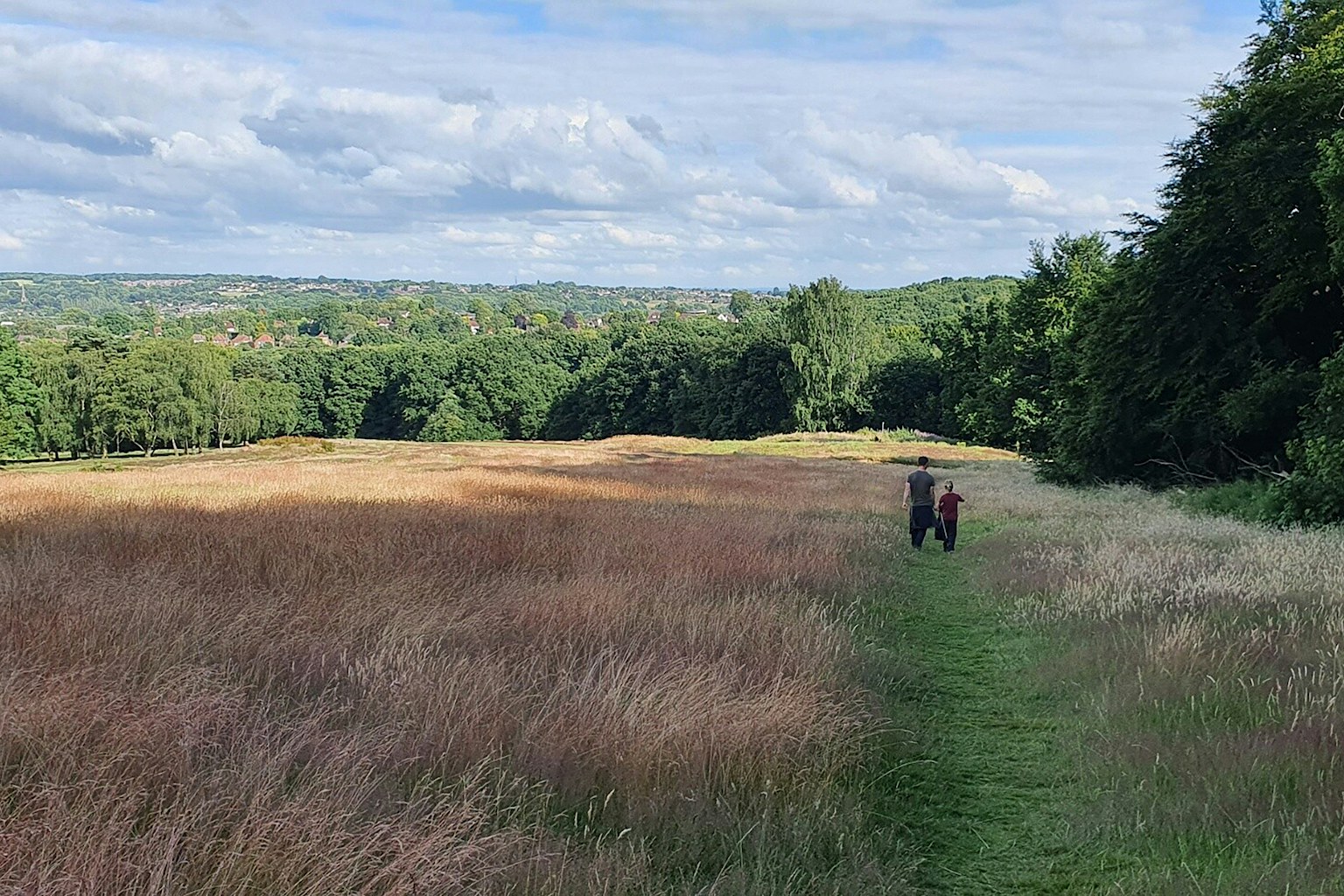
It’s early days, and interventions to date have been minimal. Indeed, that’s the whole idea: letting nature take its course, explains Dave. “We’re still mowing the fairways, just to aid people’s use of the park”, and to avoid too sudden a transition in the eyes of regular users. But they’ll gradually shrink their width and replace them with a network of grassy tracks to help guide visitors around. Meanwhile, the once-sharp boundary between the golf course’s lawns and the woodland edge is just beginning to blur.
This soft transition between one habitat and another is something that appeals to the Wildlife Trust’s Matt. “You get a really good sense of these ‘ecotones’ here”, he says, “where we’ve had a wall of woodland and then completely flat grassland. That’s starting to change.” And that’s exciting, he adds, because that’s where so many species make their home. “Turtle doves, nightingales, tree sparrows… They live in the edges, between one habitat and another.”
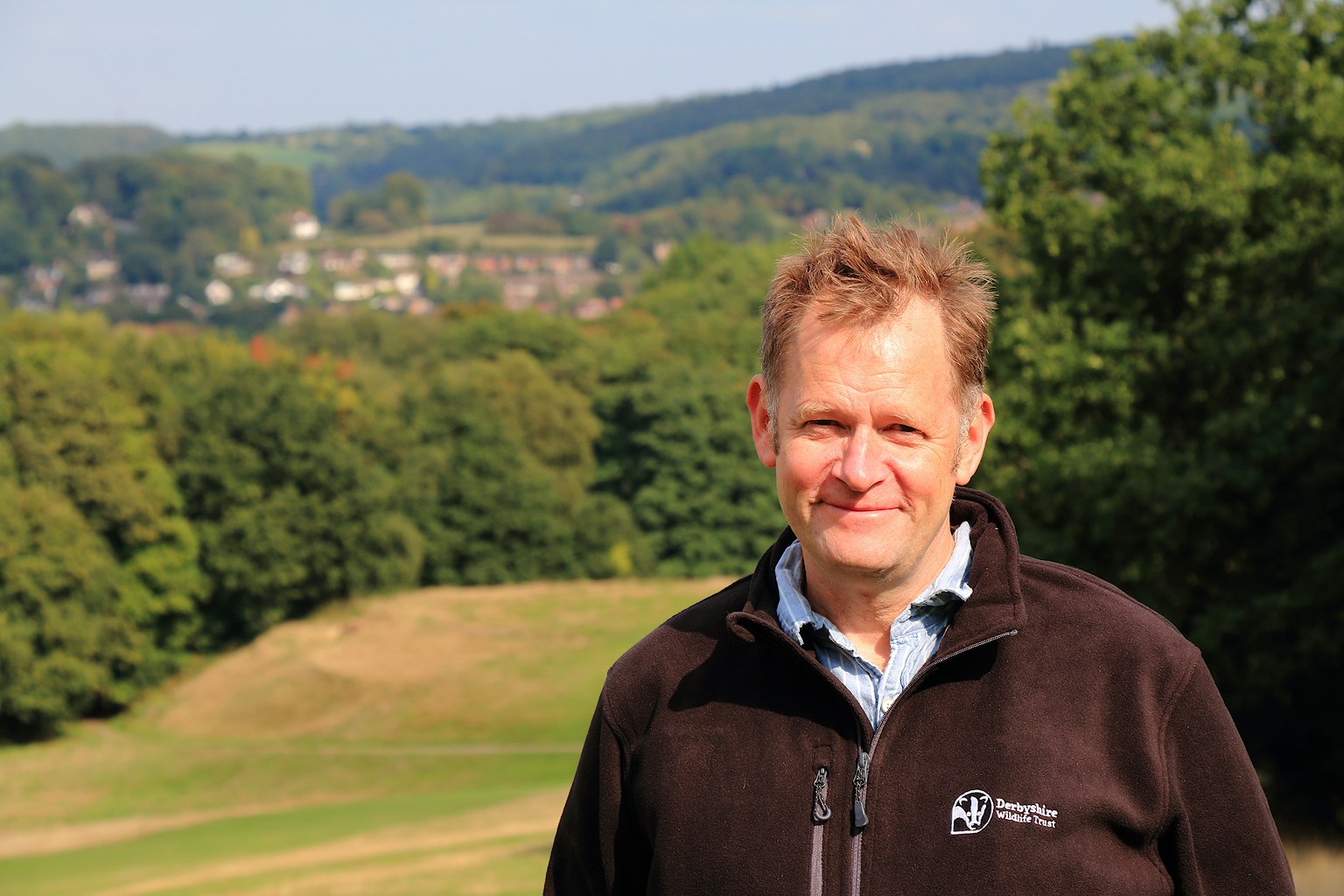
With a degree in ecology, Matt has worked in conservation all his life, including long spells on peatland restoration in the Peak District. Influenced by books such as Feral, Rebirding and The Serengeti Rules, he gradually realised the limitations of some of the highly targeted ‘species-specific’ projects he’d been involved in. He recalls working to restore wetlands in a nature reserve in the Trent Valley. “We managed the reedbeds by cutting down willow trees, burning the brash and treating the stumps with glyphosate so they don’t grow back. And I started thinking, ‘what are the species that are dependent on burnt brash, or glyphosate-painted stumps?’. Well, there aren’t any. But there might be species of moss or lichen, say, that are completely dependent on the regrowth of willow. There are so many impacts which we just don’t understand.”
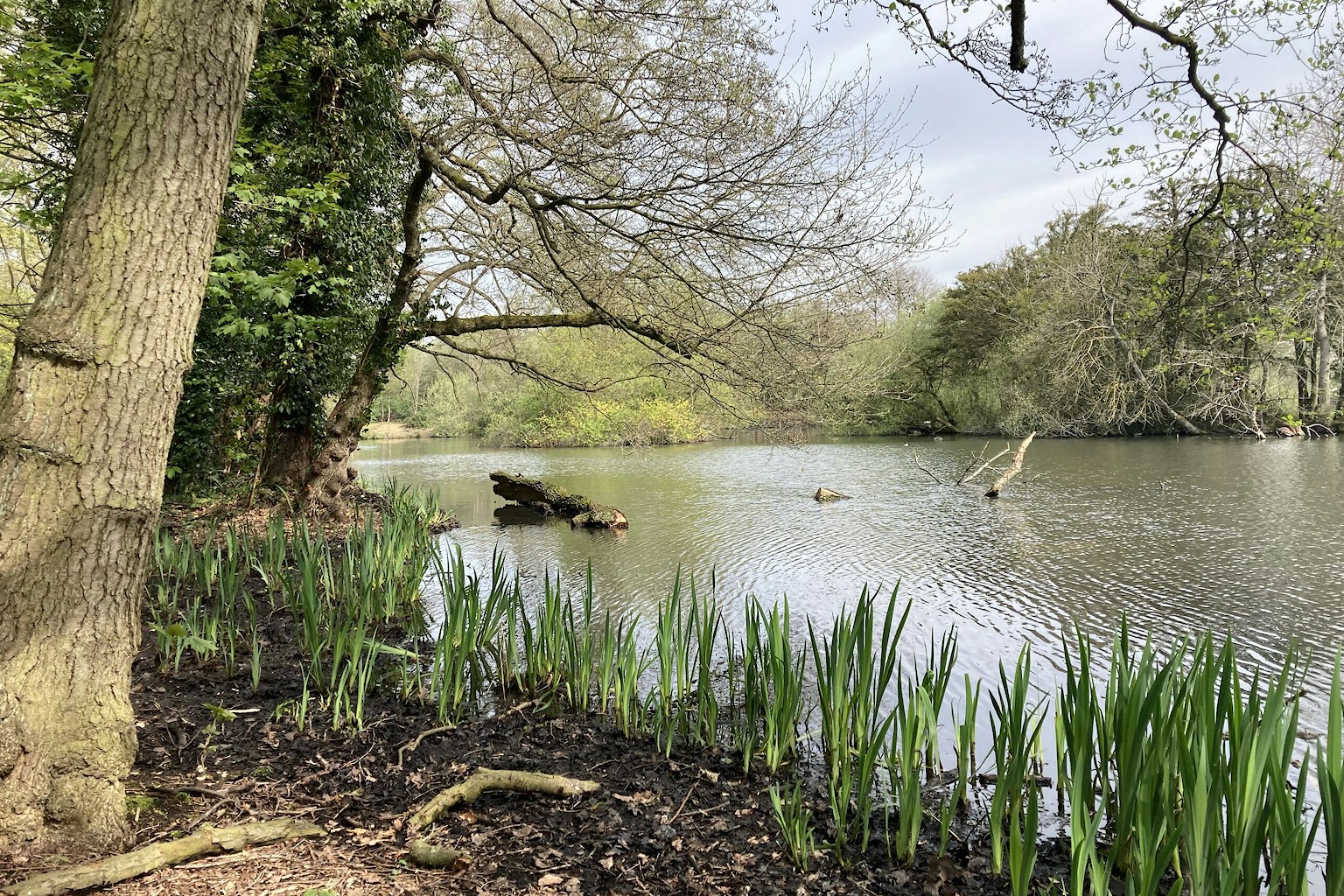
Dave’s own career has undergone a similar shift in focus. His role as Community Parks Officer looking after tidy municipal parks perhaps wasn’t the most obvious role for him, having studied environmental science and yearned for a job in nature conservation. But once he had his feet under the desk – or on the grass, rather – his passion for nature came through, and as well as the city’s conventional parks, he now oversees 10 local nature reserves. Which is why the prospect of rewilding Allestree’s tightly managed, chemically treated swathe of grassland appealed so much to him.
Creating a space where the public can engage with nature can of course be just as important as the recovery of nature itself. As Matt points out: “One of the things we’re really concerned about is the disconnect between people and nature. It’s great having these massive rewilding projects up in the highlands of Scotland, but very few people are going to see those.” What’s special about Allestree Park, he says, is that it represents “an opportunity to get some really high quality nature, slap bang in the middle of a city and suburbs, for people to experience [on their doorstep]. Nobody’s really done an urban rewilding project quite like this before.”
Highland cows and high dudgeon
As with anything that’s not been done before, it’s perhaps not surprising that the team – despite enthusiasm from the council – would come up against a few challenges along the way. The first of these was opposition from golfers. They’d been used to teeing off at Allestree and were understandably upset, and not shy of showing it. That meant it was essential to be able to demonstrate wider public support via the council’s consultation. As Dave puts it, “It had to go through all the hoops and be ratified at every stage”. The fact that the project wouldn’t necessarily need large injections of council money probably helped, he adds; other funding pots are available for rewilding, nature recovery and carbon sequestration. “We knew we’d be open to criticism if we were saying we can’t afford to subsidise that, but we can spend the money on this…”.
“Rewilding is as much about people as ecology, so it’s going to be a dynamic process.”
Matt Buckler
Derbyshire Wildlife Trust
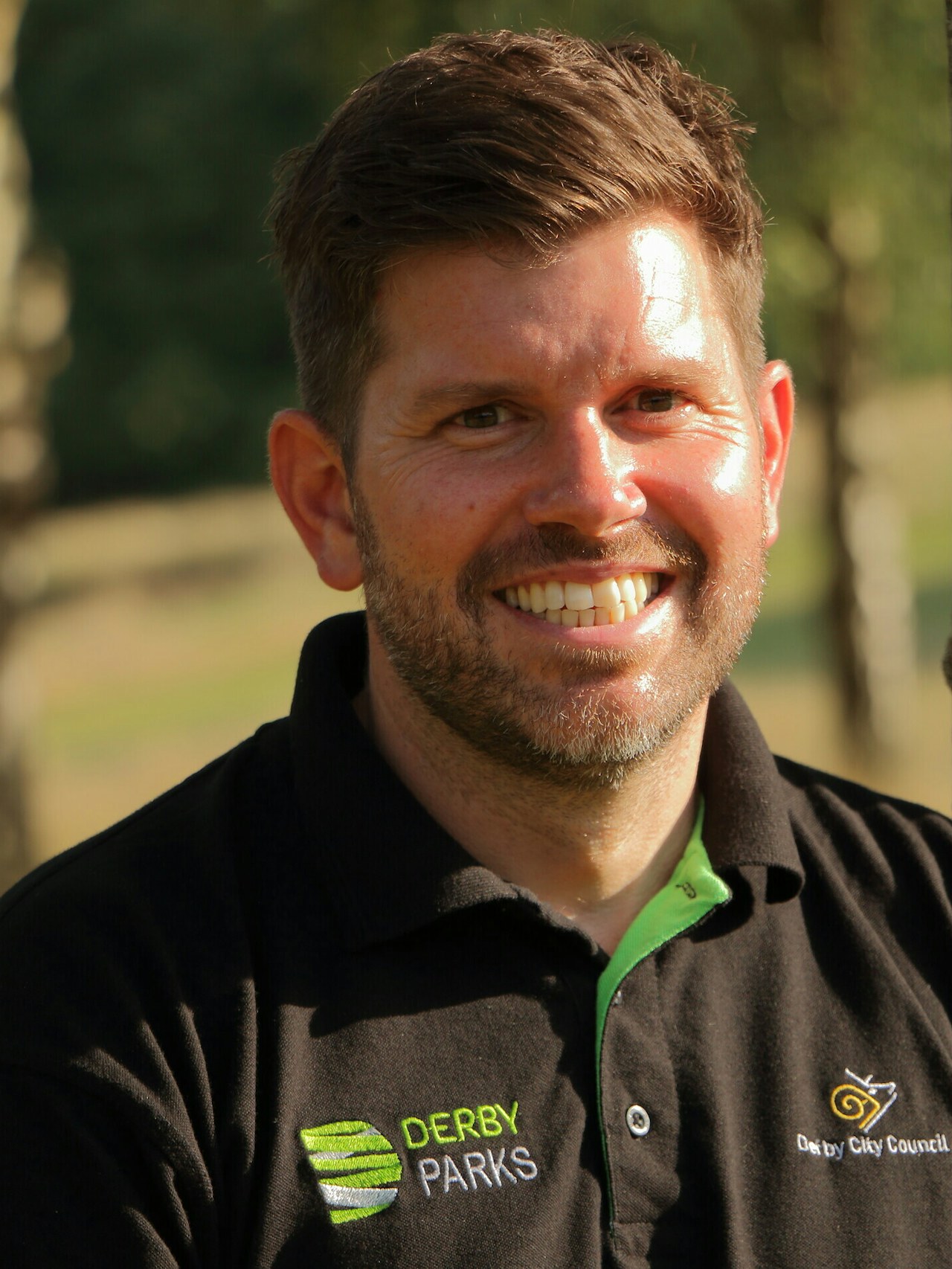
Dave and his team put together a series of workstreams on everything from natural recovery and public access, to funding, monitoring and evaluation. Meanwhile, in public meeting after public meeting, Dave and his colleagues stressed that rewilding didn’t have to mean changing the space beyond all recognition. “We made clear that we can really do as much or as little as people want: it’s their park, after all.” They were careful to include volunteers from the public in all the deliberations; aware that, as Matt put it, “we need people to love this too. Rewilding is as much about people as ecology, so it’s going to be a dynamic process”.
Just how dynamic became clear when the team embarked on the next stage of the project: introducing Highland cattle to help break up the turf and encourage healthy soil and new plant growth. Some were already grazing in fields on the edge of Allestree, but the sight of contractors coming in to put up fences around the park perimeter, cutting a number of trees in the process, sparked a furious reaction among some locals.
Fuelled by rumours on social media, locals accused the council of all sorts of things that weren’t remotely under consideration, like introducing parking charges or installing zip wires across the park. Yet in amongst the rumours says Dave, there were some valid points. In their enthusiasm to push ahead with the cattle, the team hadn’t paused to make sure local folk were onside and up to speed.
“It just brought it home to us that we have to keep the public informed, and listen to what they want and need from their local wild spaces. Because local people are really important for a project like this.”
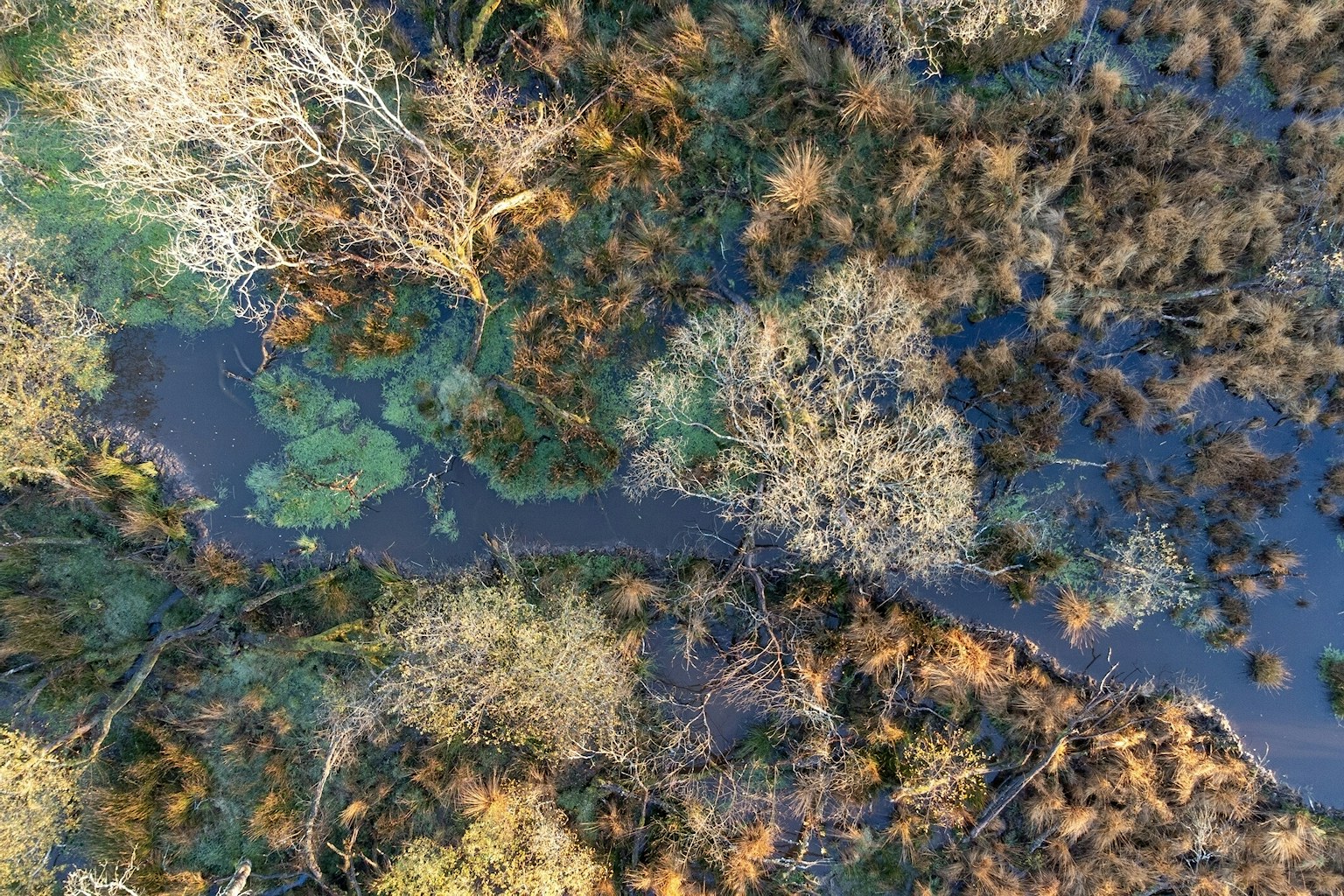
The Rewilding Network
The Allestree Park project is part of our Rewilding Network, the go-to place for projects across Britain to connect, share and make rewilding happen on land and sea.
Putting people at the heart
As Matt says, rewilding needs to be about more than public acquiescence: it’s about putting people at the heart of the process. He firmly believes that at Allestree “there are so many opportunities given its location,” he says. “And that’s what makes this different.” He talks about the possibility of involving schools and local people in ‘citizen zoo’ initiatives, monitoring the emerging wildlife, perhaps helping reintroduce harvest mice, for example. And he enthuses about the prospect of where people can come to pick fruit from trees that, in time, will be a habitat for all sorts of beneficial insects.
“I’m so pleased to be part of something which can turn the tide on environmental decay.”
Rachel Horton
one of the Friends of Allestree Park
Some of the locals most involved with the park, meanwhile, are among the greatest enthusiasts for its transformation. Rachel Horton, one of the Friends of Allestree Park, says she’s “been walking here for 56 years and I absolutely love it. I’m so pleased to be part of something which can turn the tide on environmental decay. I’ve got grandchildren, and I’ve been watching the planet dying, and that’s been a huge source of anxiety for me. So it’s great to see something positive happening here.”
Felicity Jackson, co-chair of the Friends agrees. She points out tiny wildflowers appearing in the remains of the golf course bunkers, as she enthuses about the recovery prospects for her beloved butterflies, which she’s been surveying for over a decade. That’s something which excites her co-chair Pat Sear, too. “It’s so wonderful to see all these wonderful grasses emerging, with the flowers and the insects starting to return.”
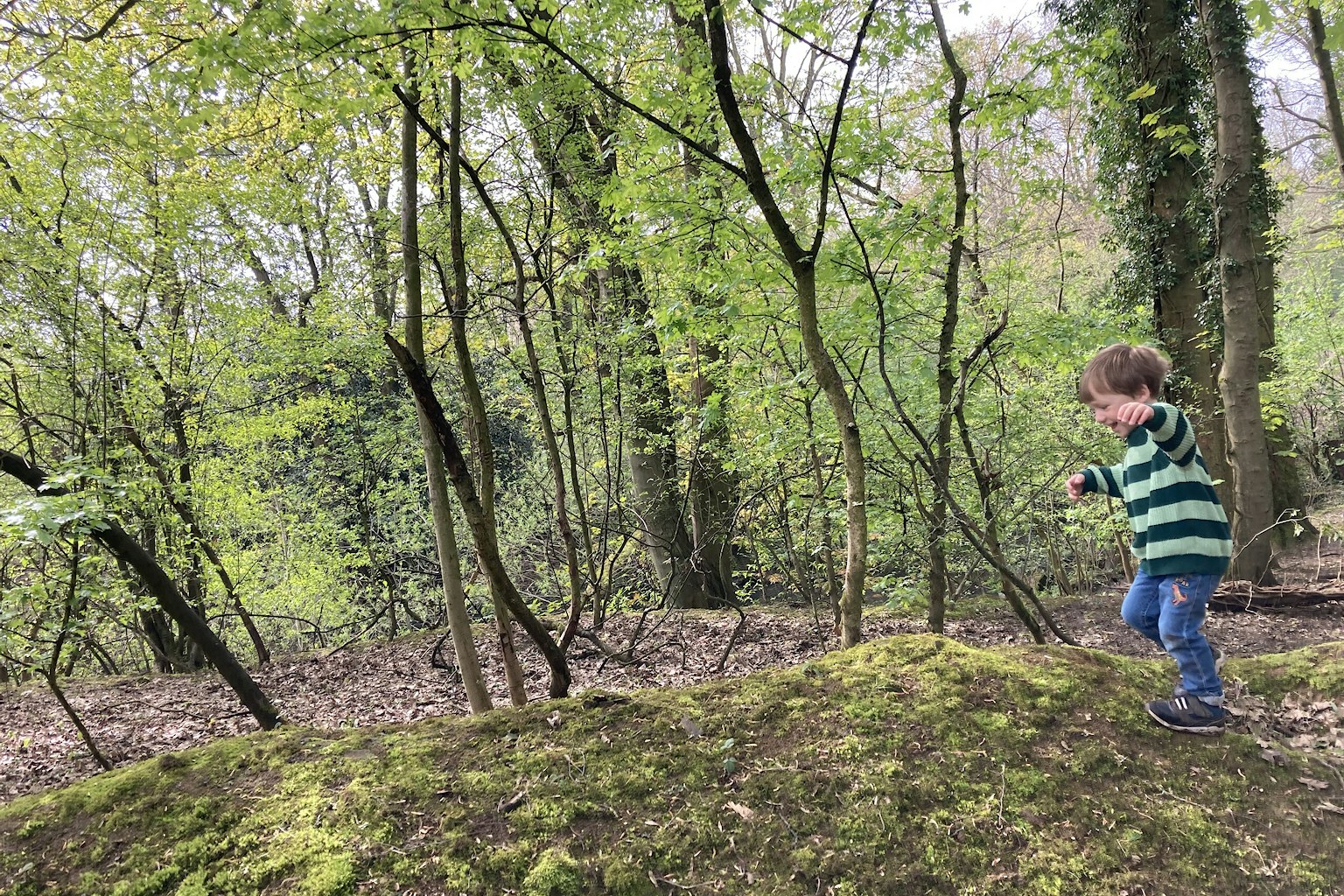
Asked to imagine what it might look like in the future, Matt conjures up a picture of “walking through clouds of butterflies, seeing far more birds in the sky, sitting here listening to the insects.” Allowing nature to do its thing might mean some surprises, though, surely? “I really, really hope so!”, he replies.
The City Council remains firmly supportive, too. Carmel Swan, its cabinet member for climate change, who is now overseeing the project, believes that “we are uniquely privileged in developing a legacy for our communities and our children” through it, adding that “I’m passionate about its future.”
Notwithstanding recent hiccups, Dave remains buoyed by the fact that “a lot of Derby residents are pretty proud that we’ve taken quite a big leap, and that here we are, at the forefront of something that I hope is going to be pretty special. Well, I don’t hope – I know!”
Published October 2023
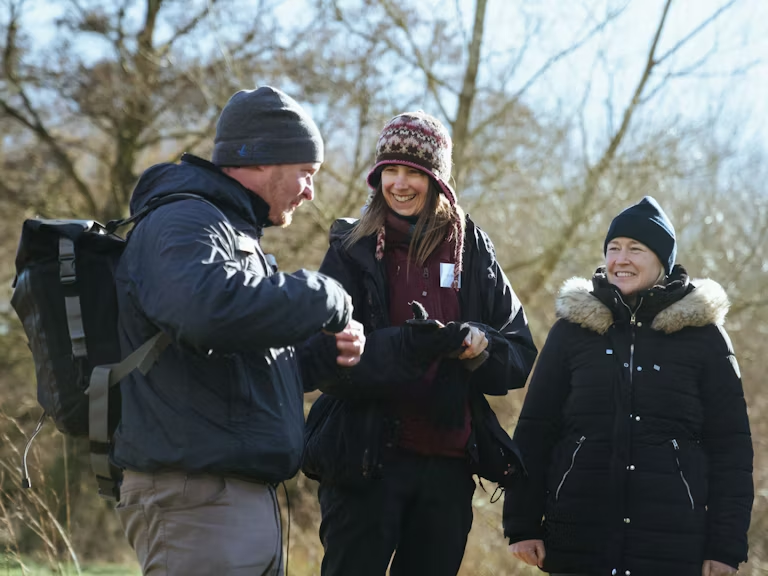
Join the Rewilding Network
Be at the forefront of the rewilding movement. Learn, grow, connect.
Join the Rewilding Network
